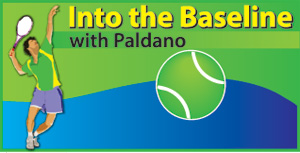‘Money’ grinds Tennis
View(s):Like the new challenges players are facing, event organizers are also confronting constraints which up until now never really showed up in this intensity. Events succeed because of its popularity and the size of the audience it attracts. For this it needs the support of many segments of the economy and the elite players alike. Keeping it attractive to all concerned has become a mammoth task to organizers and there are doubts about its future.
 Just two decades ago if players were told that there will be pop songs during the change-over of Grand Slam Tennis singles finals, it would have sounded most absurd. It is a sport where the mental side has a profound impact on performance and to keep it so, was given priority. Just 16 years into this new millennium, this is completely ignored. This is the reality of today in all international events including in the juniors. It is obvious that players do not come first anymore.
Just two decades ago if players were told that there will be pop songs during the change-over of Grand Slam Tennis singles finals, it would have sounded most absurd. It is a sport where the mental side has a profound impact on performance and to keep it so, was given priority. Just 16 years into this new millennium, this is completely ignored. This is the reality of today in all international events including in the juniors. It is obvious that players do not come first anymore.
Some matches in the Grand-Slam events began at 11pm as the second match of the ‘night-sessions’. Night is the time the body sleeps so performing at night definitely has a bearing on the reaction levels of the players. The way night matches are ‘rationed’ shows the objection players and professional bodies are facing behind the scene. If this is not bad enough, the players then have to face the media after every match. Players are not the best seasoned media handlers. Still it is compulsory to give a media conference after a match. Most of them come out badly.
These changes and challenges are triggered for good reasons. I believe the loss of attendance to fill the grand stands of the huge Tennis complexes that have come up, is certainly one. Even in the finals of Grand Slams there were empty seats this year. Audiences in Tennis, for that matter in most sports don’t really have to be at the venue to witness matches. TV worldwide audiences are in millions. It is this revenue that enabled professionals’ prize money to reach 3.5 million dollars to a Grand Slam winner, this year. So all the inconveniences the players undergo now are to accommodate the organizers to do a viable event and the players to have a good purse.
New vistas
The challenges are unprecedented for event organizers. The WTA and the ATP are the two controlling bodies of professional Tennis. They have been responsible not only in taking the prize money of winners to giddy heights but also in achieving to give a good income to payers down the rankings up to nearly 500. This has made player development viable and possible. There is a lot of support from the professional bodies to tournament organisers. This support has given avenues to go to the market place with more products to sell and get the finances needed to make it viable.
Money, money, money
The famous song of the Swedish pop group ABBA spells out too exactly what the sport world eventually is going for. While the top 50 players of the world literally can roll on money, it cannot be told to be so for the top 1000 or for that matter the top 500. In this sense Tennis is a poor performer. Football beats most of the sports ‘hollow’ by a very large margin. It is suspected that Football pays adequately to the first fifty thousand and the top three hundred make as much as an average of the top ten in Tennis.
 Test of new models
Test of new models
Some decades ago USA and Europe went unchallenged when it came to conducting popular and well attended events. Even today Europe, with the union of Eastern and Western segments is the best place for good Tennis events. They also schedule the best period of their climate – the moderate summer, to host events.
It is not the case for USA. North American events have not matched the European calendar in the last two decade. A set of events with US-Open as the climax is now called the US-Open series. At the US-Open prize giving two prizes were given for each of the open events. One of it was for the best performance in the 12-week long US-Open series. This year’s summer Olympics in Rio did disturb it but many professionals opted to play the US-Open series. The cream of the players decided to remain in Europe.
However the US-Open series as a model is going to catch on in the future and I see many regional series coming to being. The advantage in this for the players is that they can remain in the same time zone for six weeks and avoid excess travel. For the lesser nations the series gives an opportunity to form their national championships in a regional series.
Very long season
I believe, the reason behind the loss of popularity in Tennis is the length of the professional season. The ten month long back to back events in three to four tiers exhausts spectator interest badly. Tennis being an individual event it takes the best of conditioned players to the brink of breakdowns or severe physical injuries. Spectators are sensing the drop in ability and their exhaustion.
–George Paldano, Former intl. player; Accredited Coach of Germany; National, Davis-Cup, Federation Cup captain/coach– georgepaldano@yahoo.com


